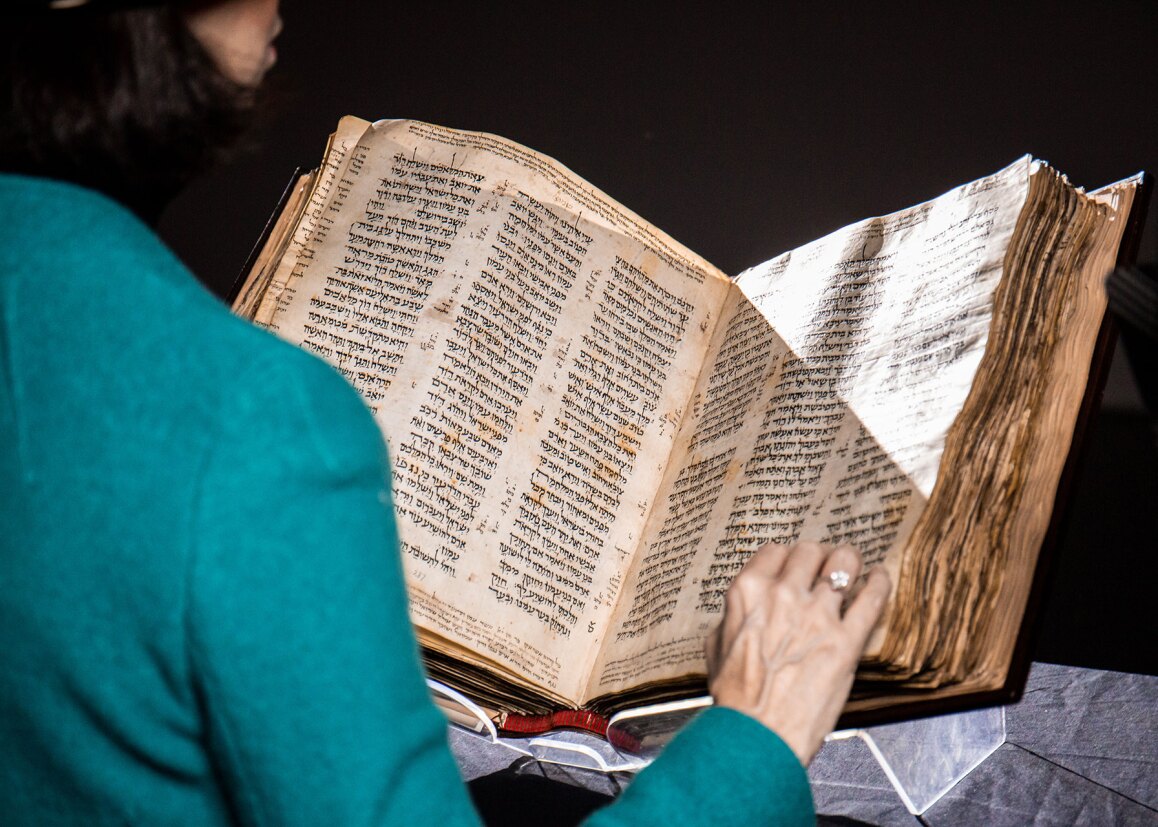Incunabula: The Old Testament
"There are three ancient Hebrew Bibles from this period. [Only the Dead Sea Scrolls and a handful of fragmentary early medieval texts are older, and] an entire Hebrew Bible is relatively rare.""The Aleppo Codex is more precise than the Sassoon Codex, there's no doubt. But because it's missing [a third of its pages], in those parts that are absent, there is great significance in this manuscript."Yosef Ofer, professor of Bible studies, Bar Ilan University, Israel"It's like the emergence of the biblical text as we know it today.""It's so foundational not only for Judaism, but also for world culture."Sharon Liberman Mintz, Judaica specialist, Sotheby's Auctions"Any Masoretic scholar in their right mind would take the Aleppo Codex over the Sassoon Codex, without any regret or hesitation.""[The scribal quality is] surprisingly sloppy [in comparison to its counterpart.]"Kim Phillips, Bible expert, Cambridge University Library

If
expectations are met this rare hand-scripted Old Testament
leather-bound manuscript that some unknown scribe produced a thousand
years ago, preparing to be auctioned by Sotheby's Auction House may
eclipse the hitherto-most expensive Jewish document sold in 2021, the
Luzzatto Machzor, a 14th-century prayer book, that went for $8.3
million. It could possibly break the record for the most expensive
historical document sold at any time at public auction; a 1787 copy of
the U.S. Constitution that went for $43 million in 2021.
The 1,100-year-old Codex Sassoon parchment (animal skin)
Hebrew Bible is set to fall under the auctioneer's hammer in May, and
it may very well go for a price as high as $30 million. It contains
close to the entirety of the Bible. Sotheby's in New York is counting
on a robust market for art, antiquities and ancient manuscripts
worldwide. In that expectation it has tagged the rare manuscript between
$30 to $50 million.
The
ANU Museum of the Jewish People in Tel Aviv opened a weeklong
exhibition of the manuscript, as part of a world-wide tour of the
artefact where it will visit the United Kingdom, Israel and the United
States before the auction date. There are three Hebrew Bibles of ancient
vintage; the Codex Sassoon and the Aleppo Codex both from the 10th
century, and the St.Petersburg Codex, dating from the early 11th
century.
 |
| Sotheby's |
A
few centuries before the Codex Sassoon's creation, Jewish scribal
scholars known as Masoretes began the laborious work of codifying oral
traditions in the manner of properly spelling, pronouncing, punctuating
and chanting Judaism's most sacred book. Hebrew letters are devoid of
vowels and punctuation in Torah scrolls, but these biblical manuscripts
contained extensive annotation instructing its readings how best to
recite the words correctly.
Certainty
over the precise location and when the Codex Sassoon was produced
remains in question; from Sotheby's senior Judaica specialist
radiocarbon dating of the parchment rendered an estimated date of 880 to
960. The writing style links its creator to the early 10th-century, a
scribe in Egypt or the Levant. Scholars feel the Codex Sassoon is not a
match for the quality and pedigree of its contemporary, the Aleppo
Codex.The scribal quality deemed to be "sloppy", relatively speaking.
The
gold standard of the Masoretic Bibles is ascribed to the Aleppo Codex,
dated to around 930, and has been considered so, for a millennia. Such
rare and valuable scripts are considered sacred in the Jewish tradition,
protected and treasured as venerable manuscripts by Syrian Jewish
communities for centuries until the 20th century when Jews were banished
by Muslim-ruled nations where they once lived for vast generations.
There
is evidence of its centuries-past ownership, beginning with a man named
Khalaf ben Abraham, who then gave it to Isaac ben Ezekiel al-Attar, who
then handed it down to his sons Ezekiel and Maimon. Later the
manuscript migrated to the eastern town of Makisin in today's northeast
Syria, dedicated to a 13th century synagogue. When the synagogue was
destroyed the codex was entrusted to Salama ibn Abi al-Fakhr until such
time the synagogue would be rebuilt, but it never was.
For
the following 500 years its ownership was unknown and then it
resurfaced in Frankfurt, Germany, in 1929, bought by a legendary
collector of Jewish manuscripts. David Solomon Sassoon, born in Mumbai,
India to an Iraqi Jewish business magnate, filled his home in London
with a huge collection of Jewish manuscripts. "His capacity was astounding, both in terms of number but also in terms of what he was able to find", explained Raquel Ukeles, head of collections, at Israel's National Library.
David
Solomon Sassoon travelled about Europe, the Middle East and North
Africa accessing old books. When he died in 1942, his collection burst
with over 1,200 manuscripts. After his death his estate was
de-acquisitioned, the codex sold in Zurich by Sotheby's in 1978 for
around $320,000 to the British Rail Pension Fund, which later flipped
the Codex Sassoon 11 years on for ten times its hammer price when a
banker and art collector, Jacqui Safra, bought it in 1989 for $3.19
million.

Labels: Antiquities, Hebrew Bible, Scribal Authenticity, Sotheby's New York
0 Comments:
Post a Comment
<< Home